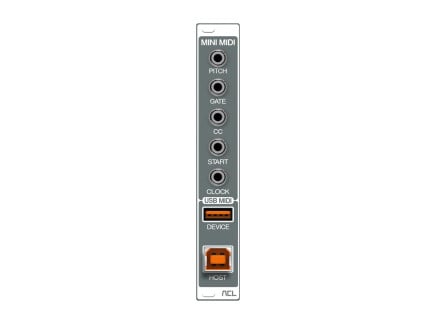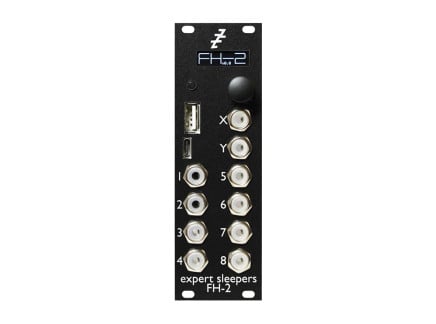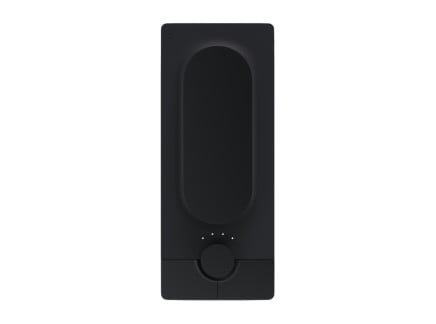With all of the synthesizers, drum machines, and MIDI controllers available on the market today, there are more options than ever to assemble your dream collection of electronic music hardware. Current analog synthesizers, digital samplers, and everything in between are bursting with power and versatility, to the point where many are fully content making music without needing a computer, something that has become a significant tool and resource for most contemporary forms of electronic music.
However, the rapid evolution of the electronic instrument industry has meant that production standards go in and out of fashion rather quickly, making it difficult to connect devices designed in different eras. Of course, MIDI originated as a solution to this problem—offering a theoretically future-proof communication protocol that allowed for the easy connection of instruments from multiple manufacturers. But MIDI itself has evolved too, shifting from being a protocol specific to musical instruments with the familiar DIN ports to a universally-recognized means of data transmission across any number of cable types. These days, it's perhaps most common to interface MIDI devices with a computer, and to do so via USB... and as a result, many MIDI controllers ditch the old "standard" 5-pin connection in favor of USB connectivity alone.
But what does one do if they want to connect their favorite USB MIDI controller to their new groovebox without using a computer? Or perhaps you're searching for an expressive controller to join forces with your MPE-capable hardware synthesizer, and the device that catches your eye is otherwise perfect—but it only has a USB port, and your synth contains only those classic 5-pin DIN ports. Thankfully, the missing link in our situation exists, in the form of the USB MIDI Host. This handy little device can be found in several different forms, but the core functionality of translating between USB and 5-pin MIDI data streams is key.
We briefly mentioned USB MIDI Hosts in a previous article discussing the various forms of MIDI connectors. If you're new to the MIDI business, consider giving that article a read, as well as our Brief History of MIDI to get up to speed on some of the terms and concepts covered in this article.
Before we dive into the nitty gritty of MIDI USB hosts and devices, we should acknowledge some developments in both music and general technology that brought us to where we are today.
Why USB?
You're likely well aware of the fact that USB is not something exclusive to electronic musical instruments—it's a general purpose data protocol used for typing keyboards, computer mice, and all kinds of additional peripherals like audio interfaces and video capture cards. With the rise of DAWs (digital audio workstations) and software instruments in the 90s and early 2000s, the adoption of USB into controllers that provide a tactile means of interaction with these programs made total sense. This philosophy is exemplified by some of the most powerful software controllers on the market, like Native Instruments' Komplete Kontrol S series, which offer seamless integration with specific applications beyond that of a more generic controller.
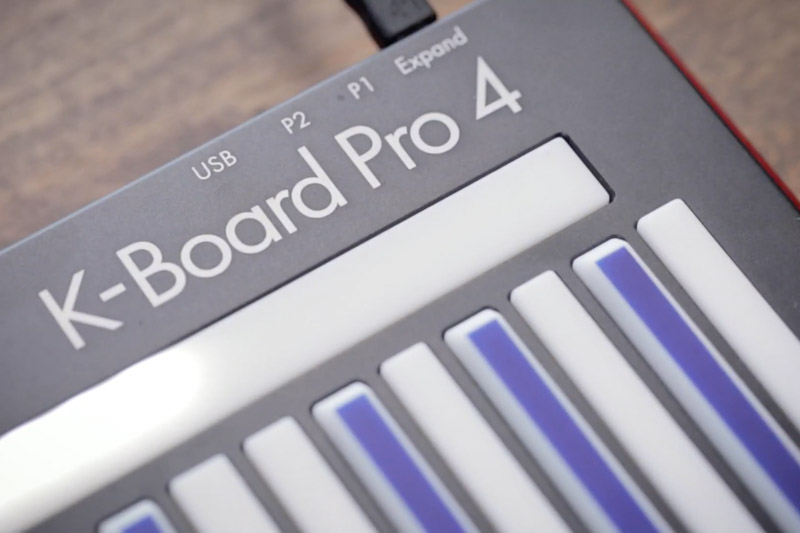
From the design perspective, there's often a bit more at play when choosing to utilize a USB port on a controller than the benefits of computer connectivity. As we've generally seen devices get smaller and packed with more features, there's a lot of appeal to consolidating several ports down to a single USB connector. When transmitted via USB, MIDI supports bi-directional communication within one cable, eliminating the need for dedicated In and Out ports as seen on 5-pin devices, as well as the fact that USB bus power also removes the need for a dedicated power port. Combine that versatility with the fact that mini and micro USB type-B and USB-C make use of highly compact connectors, the savings in cost and materials is thoroughly convincing in itself. This is one reason as to why controllers like Korg's NanoKontrol and Arturia's Microlab controllers are able to be so affordable.
So What are USB MIDI Hosts?
Of course, controllers that only have USB ports are a great choice for setups based around computers, DAWs, and software instruments, but the matter gets a bit more complex once hardware is thrown into the equation. The original MIDI specification predates the first USB devices by about ten years, which is quite a long time by technology standards, and general computer peripherals vary widely in the data they work with. Since we're working with digital protocols here, it's unfortunately not as simple getting an adapter cable, plugging it in, and expecting it to work. Most synthesizers and drum machines still generally make use of DIN connectors for their MIDI ports, so there needs to be some kind of mediator present to translate data between USB and 5-pin MIDI formats.
This is precisely the role of a USB Host. As defined in the USB specification, the host provides power and initiates communication with connected devices, telling them what to do or responding to polled messages from them. In our case, we want something that can relay messages back and forth between a serial stream of USB data from our connected controller and our 5-pin MIDI ecosystem. Traditionally, hosts have been some form of a general computer, but in recent years smartphones and tablets have grown to fill this role too. And with the growing accessibility of microcontrollers to more programmers with niche and musically-inclined interests, standalone USB MIDI hosts have become a prevalent solution to format connectivity issues.
There is one more thing which needs to be considered in working with USB hosts: class-compliance. A majority of USB audio interfaces and MIDI controllers are advertised as "USB Class Compliant," meaning that additional driver software is not necessary for the data transmitted from the device to be understood by the host. Since standalone USB MIDI hosts aren't running an operating system like Windows or macOS, there's no way to install a driver, so it's generally recommended to turn to a class compliant USB MIDI controller in this situation.
Choosing the Right USB MIDI Host
With a USB MIDI Host, converting between your favorite USB MIDI controller and 5-pin MIDI instrument is often a plug-and-play experience, and these days they can be found in several different forms, from standalone devices to Eurorack modules.
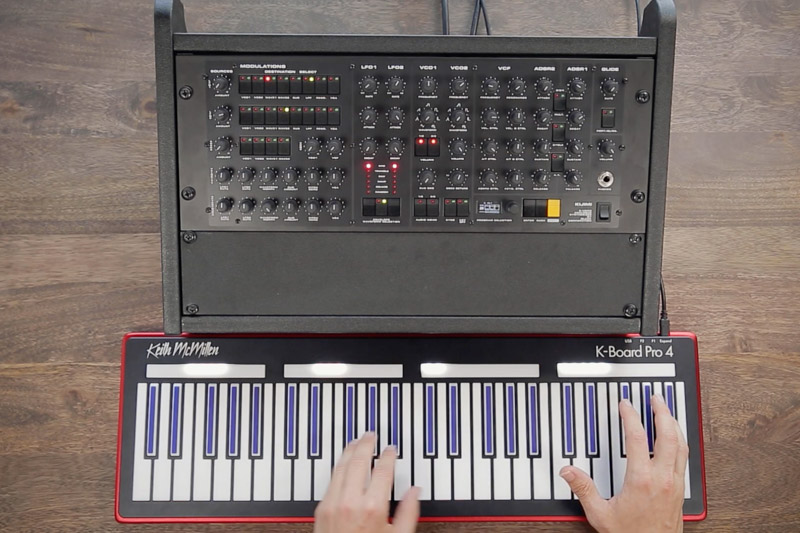
Should your interests lie with more general synthesizers, drum machines, and the like, a standalone USB MIDI host is the most direct solution. Kenton's aptly named MIDI USB Host is a compact, straightforward device that's perfectly suited for pairing your favorite USB controller with your favorite hardware synth. It's especially appealing for connecting MPE controllers like a Sensel Morph to a versatile desktop synth like the ASM Hydrasynth or Black Corporation's Deckard's Dream. If you're using one of the great controllers from Keith McMillen Instruments, their MIDI Expander fills a similar role in powering your QuNeo or K-Board Pro and getting it communicating with other hardware pieces.
If you're using the Morph, Seaboard, or a similarly expressive controller with a USB host, this is also a great way to unlock some new tricks with larger keyboard instruments, such as Sequential's Prophet-6 and OB-6. Even prior to their latest OS update that added support for responding to MPE data, routing external MIDI data into these synths allowed the use of things like polyphonic aftertouch for imparting expressive capabilities into your music. Of course, one could meticulously program this data via a DAW, but the immediacy and joy found by plugging in a controller and playing it yourself feels pretty magical.
MIDI Hosts in Eurorack
Prefer the workflow of patching with Eurorack modular systems? You'll find USB MIDI hosts tucked within modules of all shapes and sizes. Some like the Endorphines Shuttle Control and Expert Sleepers FH-2 offer a fairly immediate approach to adding MIDI control to your patches by plugging your preferred controller into their dedicated host ports. These modules can usually handle everything from basic translation of notes or CCs into control voltages, but also contain arpeggiators, clock dividers, rhythm generators, and other handy features to spice up your MIDI input.
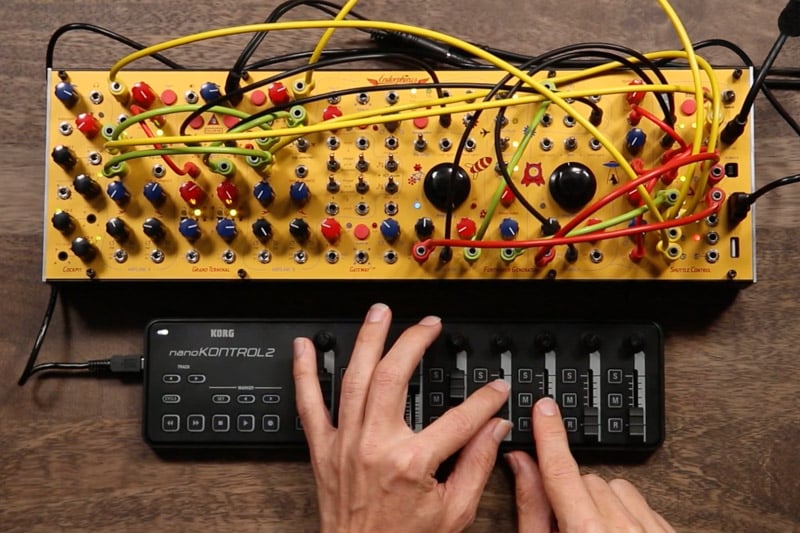
Some of Eurorack's most powerful seqeuncers like Squarp's Hermod and the Five12 Vector Sequencer can also host connect USB MIDI controllers. Modules like these are excellent choices as central hubs for those that prefer high-detailed sequencing, MIDI-CV conversion, and manipulation of data and sequences in a single module. Bring a MIDI controller into the mix and suddenly that power is exponentially increased, with keys and notes providing immediate means of useful input.
Having a USB MIDI host in a module is a great way to add a direct method to generating and manipulating CV in your patches. We're often asked how one can integrate their Teenage Engineering OP-1 with their modular system as a controller, and having a MIDI host module handy is by far the most straightforward way. It's also worth noting that most of these listed modules can simultaneously function as both a MIDI host for a controller, as well as a device to a connected computer, making them an optimal choice for processing data from all kinds of sources.
Courteous Hosts: Instruments with USB Hosts Built In
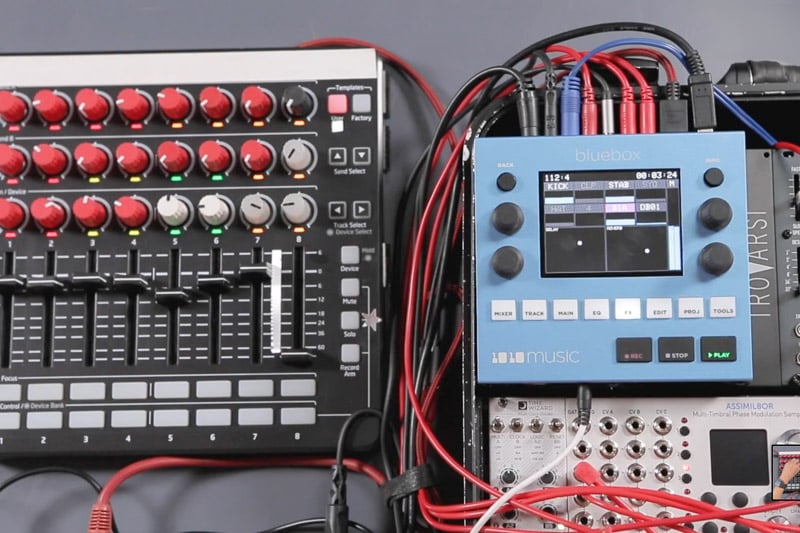
As USB MIDI controllers are seeing more widespread usage, especially in the realm of expressive and/or portable controllers, some instrument makers are picking up on this trend and incorporating MIDI host functionality into their products. Powerful workstation keyboards like Korg's Kronos and Nautilus gain another level of flexibility with something like a NanoKontrol or Akai MIDImix, and once mapped can provide instant access to some of the deeper parameters at any time. Similarly, Waldorf's flagship Quantum and Iridium synthesizers both offer USB type-A ports for connecting a controller to make use of their quick and easy MIDI Learn capabilities.
But it's not only the large instruments seeing this treatment—many of the powerhouse desktop devices that are currently available can be paired with additional controllers for further customization to the needs of your setup. Critter & Guitari's Pure Data-powered Organelle M can be extended with external controllers via the built-in USB ports, as can 1010 Music's compact Blackbox sampler and Bluebox mixer. The Bluebox in particular is significant, as an external controller can easily address the concerns of those who might miss the tactile feel of a mixer despite all of the flexibility offered in its compact, touchscreen-based form factor.
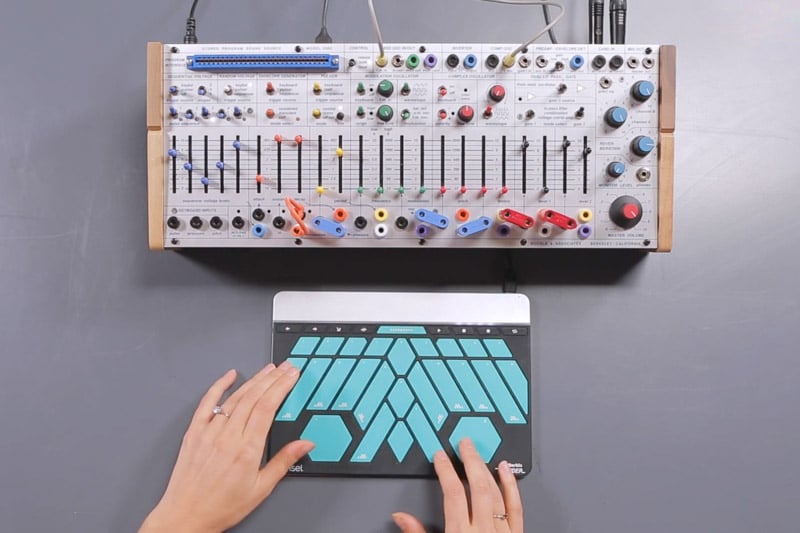
For the experimentalists out there, Buchla's Easel Command can be fitted with a MIDI Host Expander for directly connecting USB controllers. Should you prefer the East-coast synthesis approach, Korg's ARP 2600 M also provides a host port to pair your favorite keyboard with this shrunken down variant of an iconic instrument. If sample-mangling is more of your vibe over synthesis, the GR-1 Granular Synthesizer from Tasty Chips can greatly benefit from plugging in a keyboard for melodic playing, or extending the knobs and faders on the unit itself with custom mappings on an additional controller.
While not technically instruments or synthesizers, I did want to mention that iConnectivity's mioXM and mioXL MIDI interfaces can host several USB MIDI devices at once. This is a great option for studios loaded up with all kinds of different MIDI capable gear and control surfaces that need to be neatly coordinated with a computer-based workflow.
Simply put, if you spend a significant portion of your creative energy working with hardware, adding some form of USB MIDI host to your stash of utilities is a worthwhile investment. Ensuring that all of your gear can properly talk to each other is an important step in assembling a setup that's conducive to keeping a strong and healthy creative flow, and reduces the need for owning multiple pieces with redundant functionality aside from their choice of MIDI port. Whether or not you choose to use a computer for your music making practice, the USB port isn't going away anytime soon, and will continue to be a common choice for MIDI controller manufacturers. Keep your options open and grab a USB MIDI host that works best for your choice of tools.



